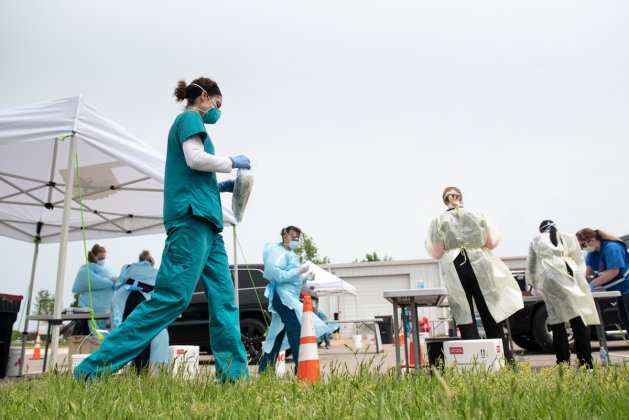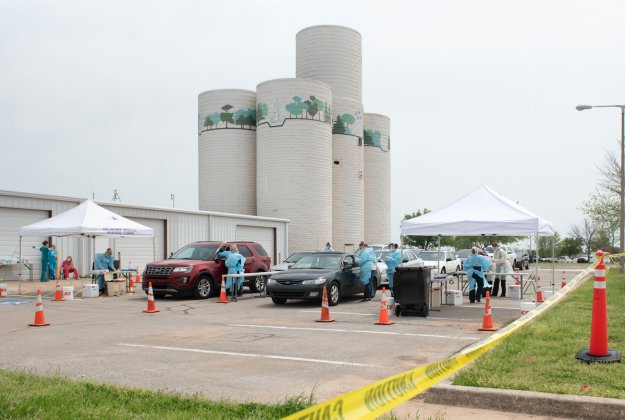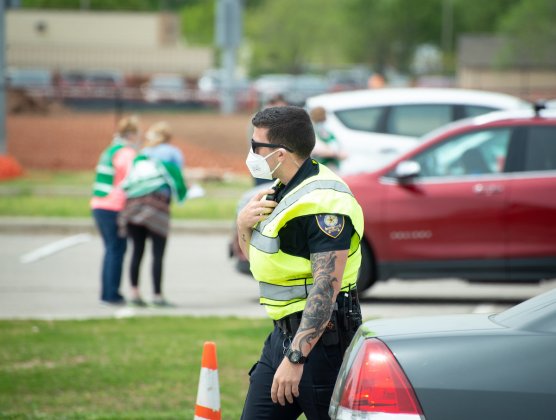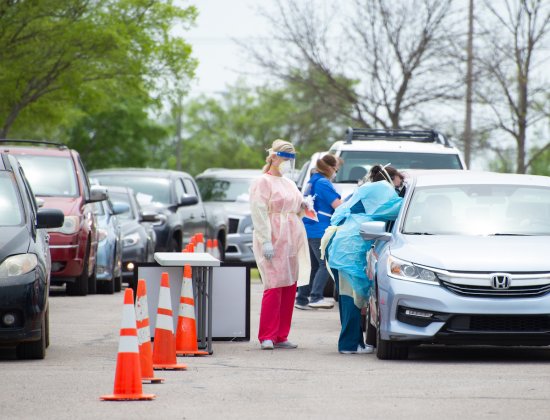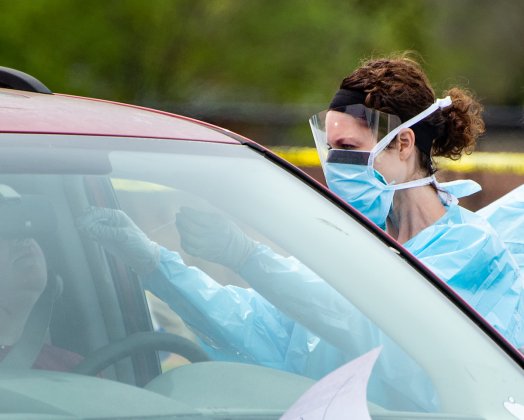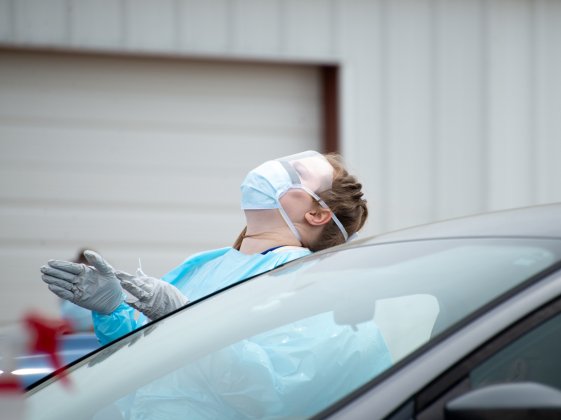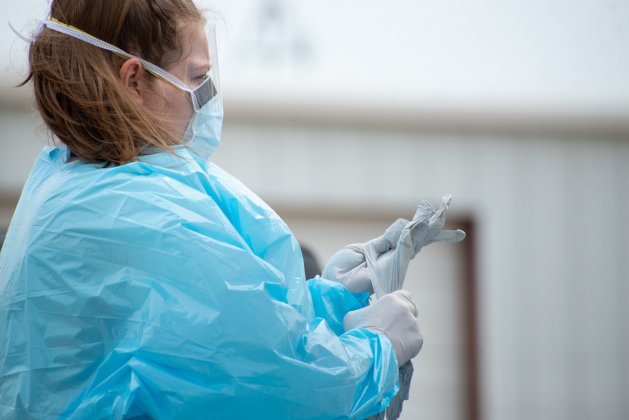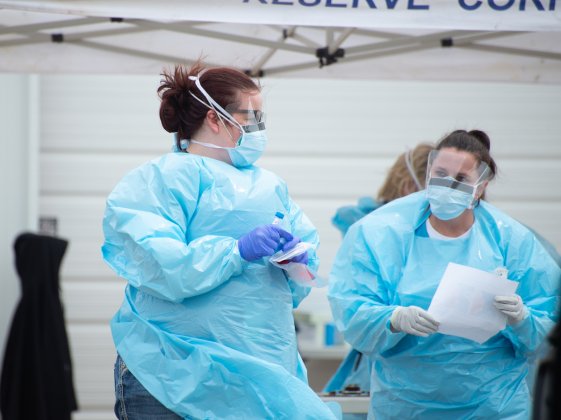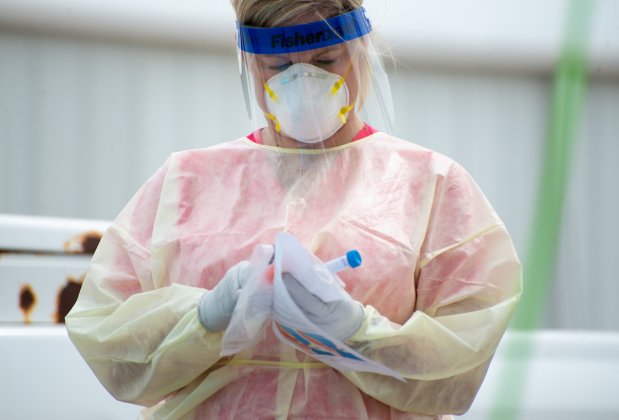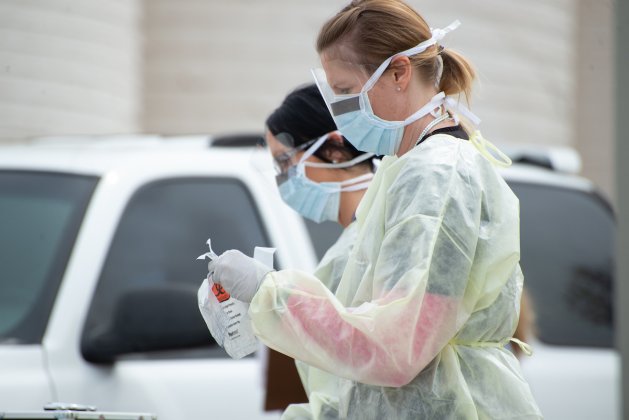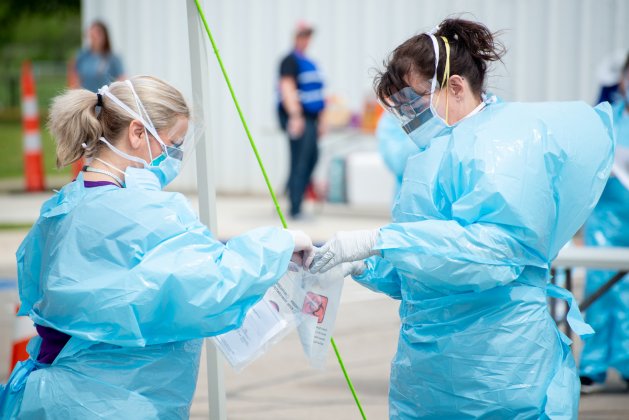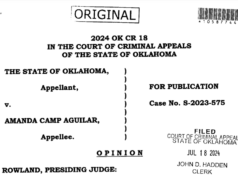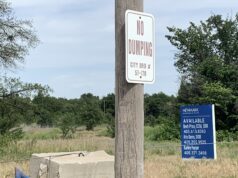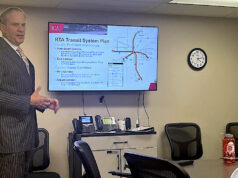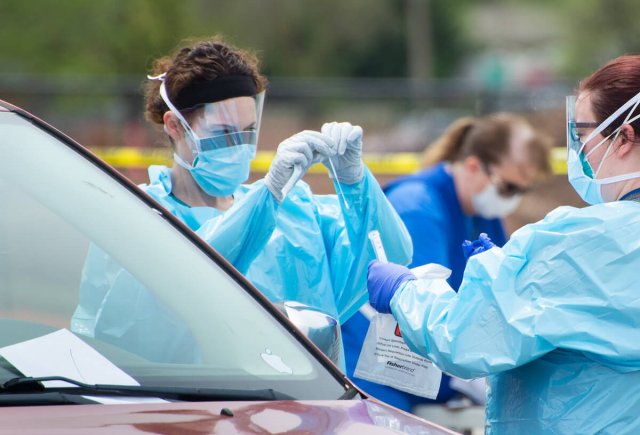

If you saw me Thursday, you probably got tested for COVID-19.
The only time I left the house was to visit the drive-up testing facility in Norman, provided by the Cleveland County Health Department.
I’m really familiar with the place: Griffin Park, where I have watched my two children and two grandchildren all play soccer, softball and baseball ball over the years.
But I’d never seen it looking like this. Dozens of cars were in a line that wound through the parking lot, waiting their turn at a spot below the grain silos-turned-art — the iconic symbol of a park that was once a farm.
If art is about emotion, then it was fitting to have a work of art looming over a place that was suddenly tied to so many hopes and fears about this virus for which there is no vaccine and no known cure.
For those of you who were tested Thursday, your wait was up to an hour or more. Then, when your car reached the front of the line, you were asked to stay buckled up. Masked and gowned nurses carefully held swabs in their gloved hands and politely explained that you needed to tilt your head back. Then they reached through your car window and inserted a swab deep into your nose and then put the swab into a long, thin tube, which was then put into a sealed bag to be transported to the laboratory.
The seriousness of each test was visible — behind masks and shields — on the faces of the nurses who staffed the testing.
It did not look like a fun experience for you. Having a sample collected from the very back of your nasal passages isn’t a pleasant day at the park. Some of you grimaced. Some were more vocal. Fortunately, it was brief.
But now you have to wait to find out whether you will join the more than 1,600 Oklahomans who have thus far tested positive for the novel coronavirus. If you are infected, the health department will call. If you don’t hear from them, you can call to confirm results. Your samples were sent to an Oklahoma State University laboratory for testing.
It should take only a day or two, but I imagine it will seem a lot longer.
Medical professionals working hard to help us all
Thankfully, I was not there because of symptoms. I was there to document by camera this moment in history. To share it with others, some of whom may have symptoms like yours and wonder what testing is like.
And I was there to bring notice to the work medical personnel are doing to help us all.
Below are some of my photographs. I tried my best to avoid photographs that identified you, out of respect for your privacy. After all, the last thing you had in mind was participating in a photo shoot.
By the time I stopped photographing, there had been more than 120 swabs collected. That was almost half the number of test kits the medical team had. And there was still a long line of cars waiting.
I want to thank Sara King, health education officer at Cleveland County Health Department, for her assistance in my documenting this event. I hope soon it will be a thing of the past so she and others at the department can return to more regular tasks. And so the rest of us can, too.
In the meantime, future drive-up testing is planned in other locations. To find out about more drive-up testing in your area, visit the Oklahoma State Department of Health’s coronavirus website.









